After the overcrowded streets of Hoi An where tourists far outnumbered locals, Mandalay was a refreshing change of pace. We came to Mandalay from Vietnam to get off the well worn tourist track and it took just a few hours in this country to validate that we had. Mandalay feels relatively untouched by western influence. Men walk the streets in traditional longyi skirts and women have geometric shapes painted on their face with tanaka, a natural sunblock made from the bark of the tanaka tree.
We had two days in Mandalay prior to going to Bagan. As we ate breakfast on our first day, the morning sun illuminated dozens of gold stupas peeking above the soupy green and gray of the city. It was impossible to visit every temple and attraction of Mandalay but we gave it our best shot, cramming the highlights into two days of whirlwind sightseeing. We spent the first day exploring Mandalay proper and then hired a car and driver to explore the “five ancient cities” located around Mandalay.
Our first stop: the Jade Market. Myanmar is home to the largest jade reserves on the planet and this precious stone makes up just under 50% of the country’s GDP. The Myanmar Jade Market is several square hectares of organized chaos. Here buyers from all over the world, but mostly China and India, come to buy jade in bulk and ship it home to local jewelers.

Entrance is free to locals but cost 2,500 kyat (pronounced chat) ($1.50 USD) to enter the market proper, which was a fenced in grid of stalls selling, making, and inspecting jade in every form. Established shops with clean white interiors showcasing deep green stones of ebony velvet shared walls with rows of mud-splattered polishing wheels. It was all there: raw stone blocks to small chips ready for carving to polished finished items that glowed in the sun. The loud whine of stone cutters harmonized with the rasp of metal files on stone and was joined by the chorus of voices haggling and inspecting quality. We spent just over two hours in the jade market exploring and then buying souvenirs (the cost of rings and small charms for souvenirs is about 2,000 kyat each) and soaking in the market. We ended the market in one of the more established shops, learning about the different qualities of jade while looking at small lime elephants. The most lasting image of the Jade market was the callused hand of a shopkeeper nestling two similar sized translucent, white Buddhas that cost $1,500 USD and $2,100 USD each. In this industry with no safety regulations, people work incredibly hard and there is still a boom or bust mentality.
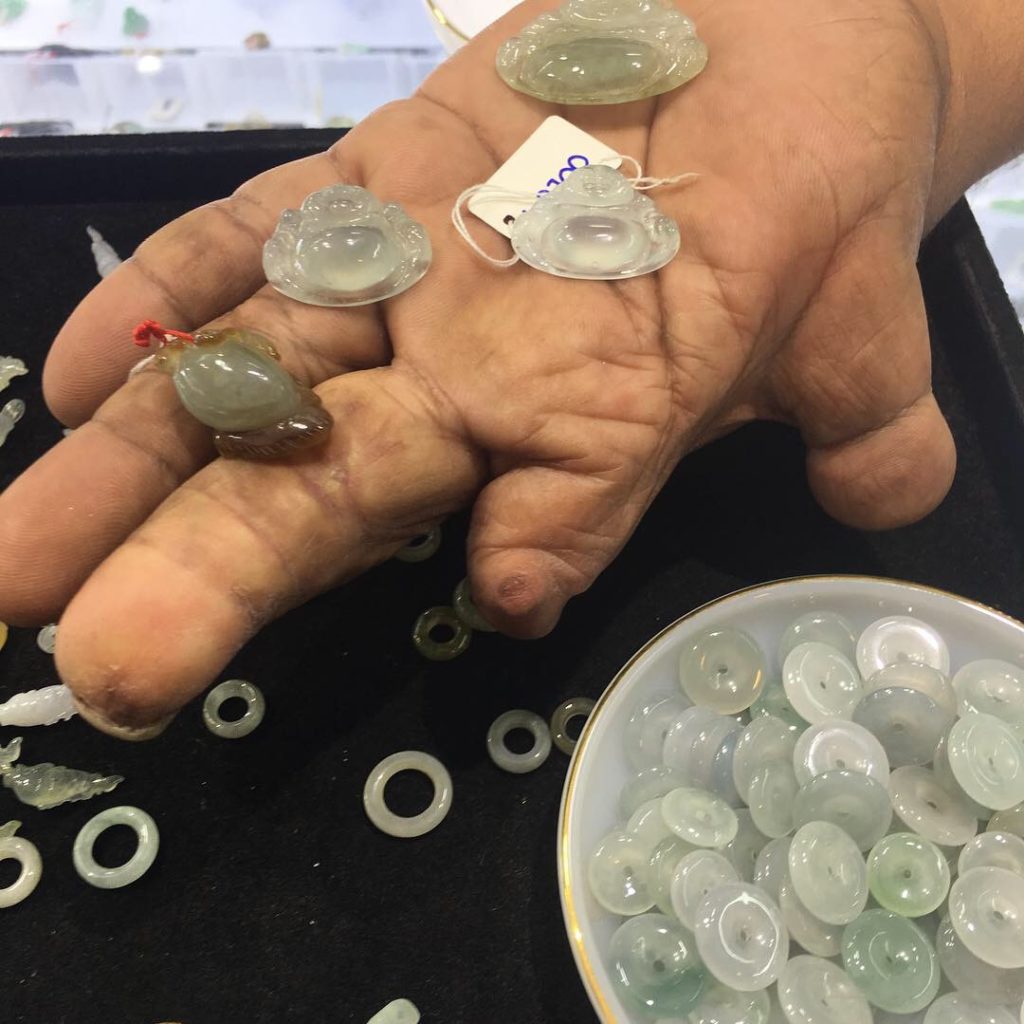
The next stop was the old Royal Palace. The palace was constructed by King Mindon in the middle of the 19th century and would be the last royal palace of the Burmese monarchy. At the time Burma’s national treasury was low on funds so most of the palace materials came from an older palace in Amarapura 11 km south of Mandalay. The grounds of the palace are protected by towering stone walls and an emerald green moat. Once entering the gate, it’s another five to ten minutes by car before you reach the palace itself. The British Empire’s colonial takeover of Burma ended the monarchy and they used the facility as their seat of power and troop barracks. In World War II Burma was the scene of heavy fighting between Japanese and Allied forces and most of Mandalay was destroyed by Allied bombing, including the original wooden Royal Palace. The current Royal Palace is a replica built in 1990. Still, the sight of the brick red buildings crowned by the gold of the main hall tower is a stunning sight. Before leaving the palace, we climbed the viewing tower and were truly able to appreciate the scale of the palace grounds, as well as treated to a beautiful view of the palace itself.
We then went to the nearby Shwenandaw Monastery, one of the few temples constructed entirely of teak that survived World War II. Wooden Buddhas dance on the doors of the temple and peacocks strut above on the railing in intricate carvings. Inside the temple light falls through the numerous doorways, breathing life into the old gilded walls. Walking through this 140 year old wooden structure is a journey back in time and is a must see.
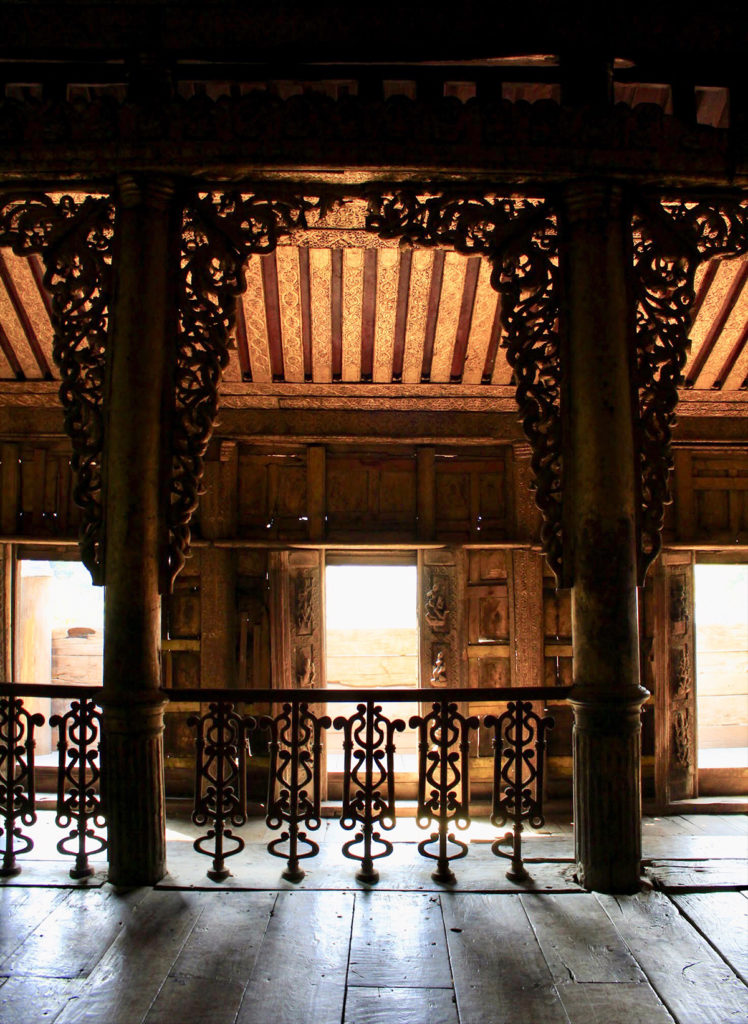
Where the Shwenandaw Monastery was small and full of charm, the neighboring Ahtumashi temple is towering and grand. The growling dragons protecting the steps are the only original part of the temple, and the rest was rebuilt after being destroyed in World War II. Large on the outside, stepping through the doors of the temple takes you into a cavernous room. A shrine to Buddha on the far side is the only object decorating the otherwise spartan hall. Stairs take you underneath the temple to an open air room with even less decoration than the one above. While an impressive sight, the Ahtumashi temple is not a must-see in Mandalay.
What is, however, a must see is the Kuthodaw Pagoda, home to the world’s largest book. Four symmetrical walkways stream out from the main golden stupa. Neat angular rows of white kyauksa gu (stone inscription caves) spell out concentric squares around the stupa. Each of the 729 white kyauksa gu is home to one page of the 15 books of Buddha. Each page is 1.5 meters tall and 1 meter white. The gray pages are guarded by iron bars to prevent vandalism and are decorated with lines of the black swirl of Burmese.
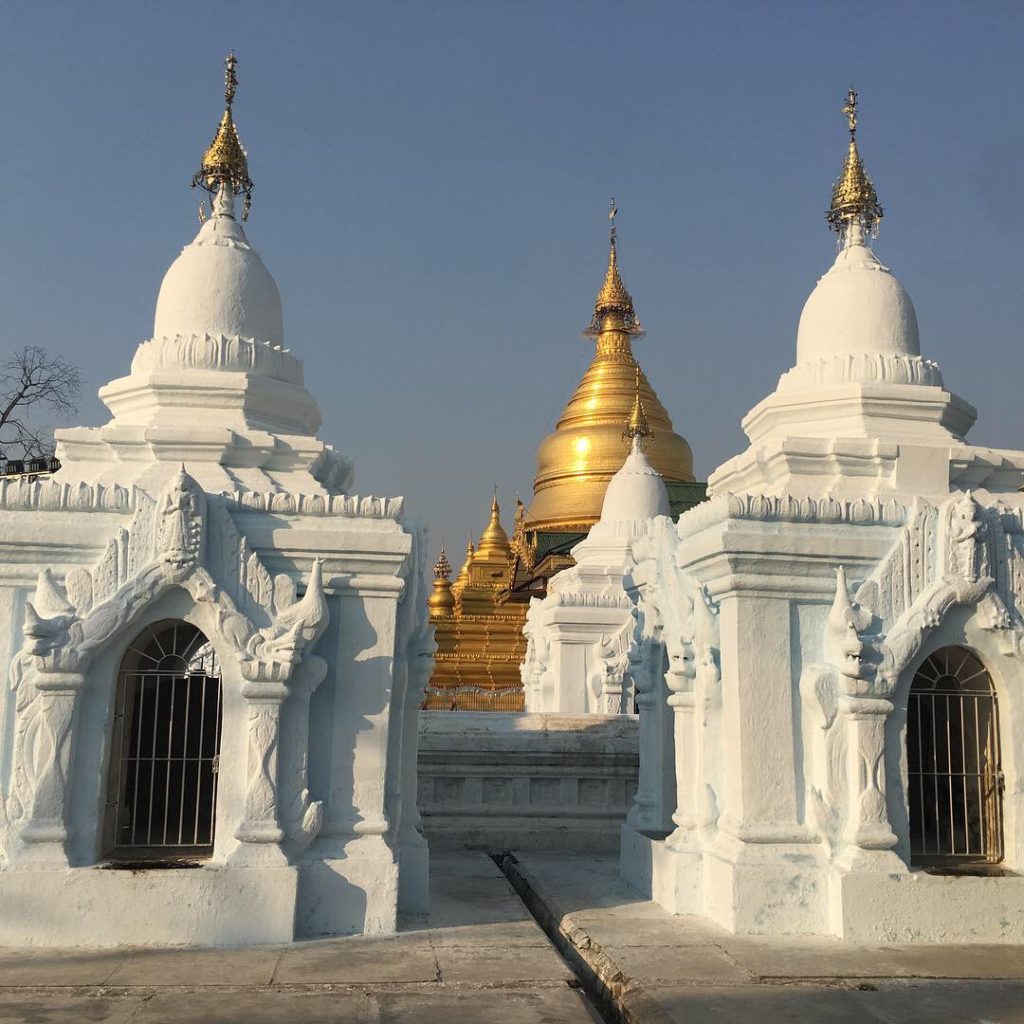
Our last stop of the day was the top of Mandalay Hill. Columns decorated with a rainbow of mirrors reflected back a fractured image of yourself. However, our gaze was not fixated on the temple but on the horizon where we watched a blood orange sun dip below the layer of smoke and smog blanketing the horizon. As our day began, so too did it end, watching the last light of the sun kiss the gilded stupas goodbye.
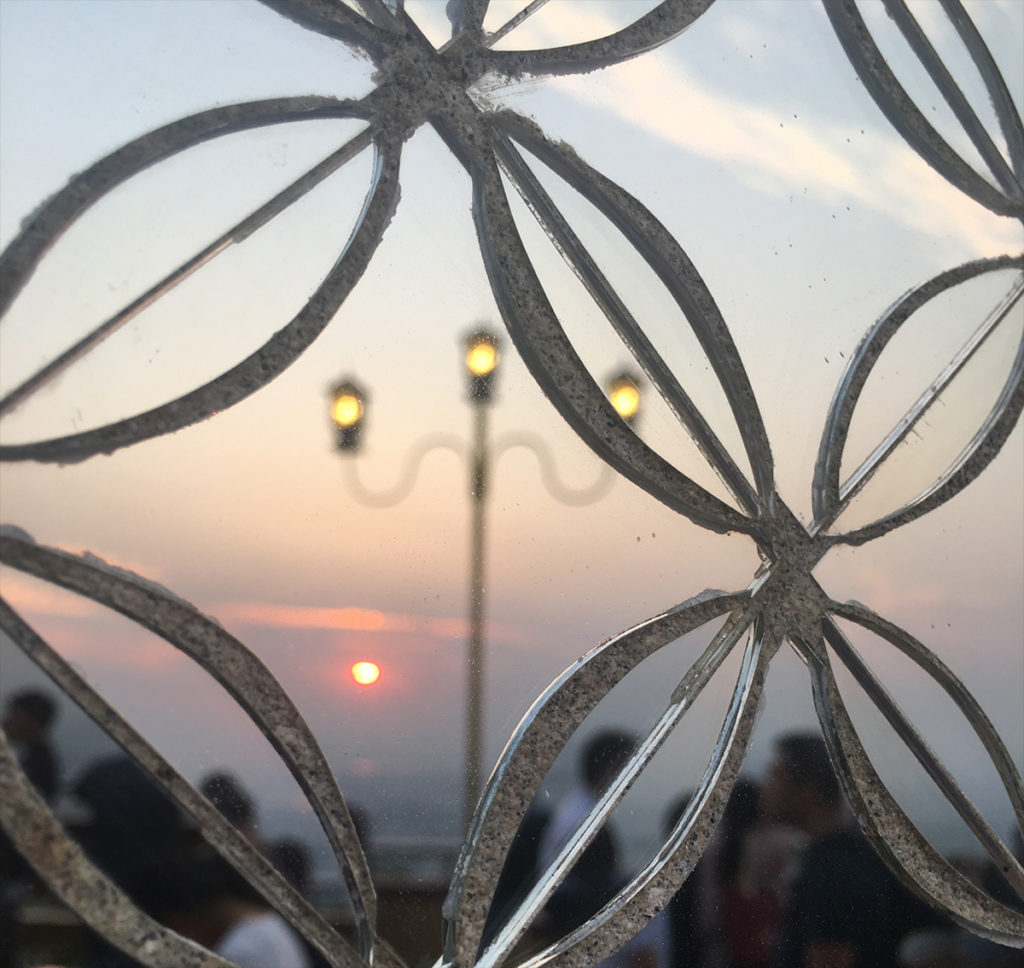
The next day we met our driver and went about exploring the five ancient cities around Manadalay.
Mingun: Mingun is across the Irrawaddy River from Mandalay. From 1790 to 1815 a series of Buddhist temples and religious structures were built and subsequently damaged in a strong earthquake in 1839.

Mya Tein Tan Pagoda is in the background.
The Pathoedawgyi was designed to house the world’s second largest bell (behind the one in St Petersburg). When the unfinished temple was damage the bell was moved 400 meters down the road and housed in a nondescript pagoda.
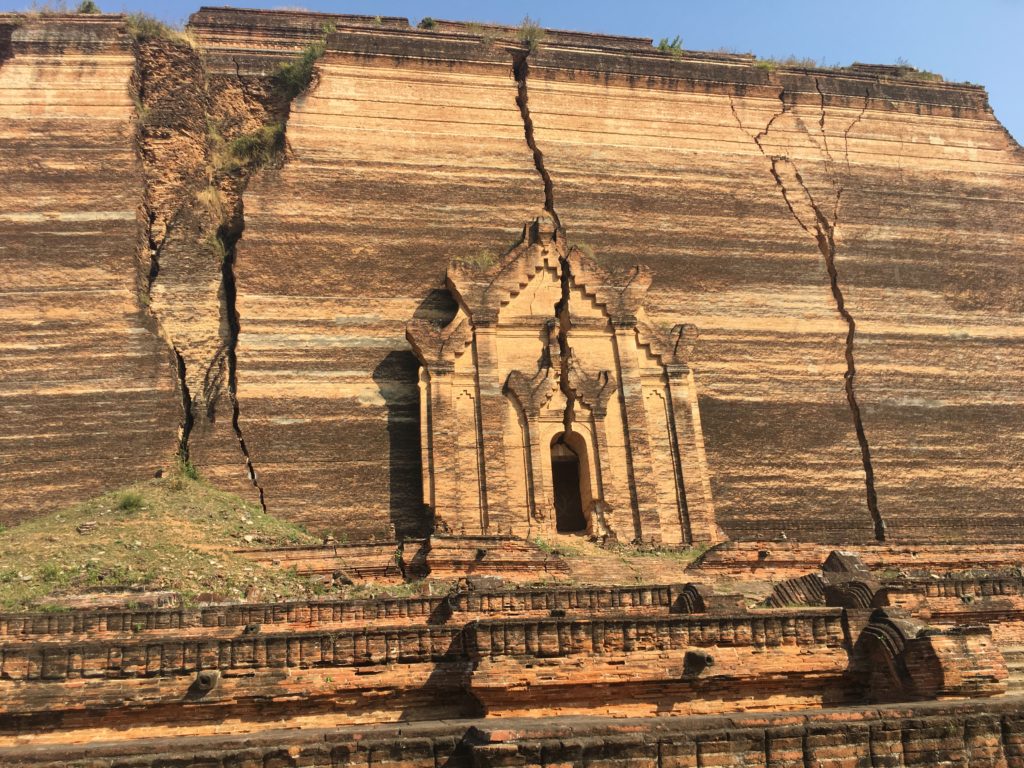
The Mya Tein Tan Pagoda is a large structure opened in 1815 and was built to resemble the mythological mountain of Buddhism with its many different levels. We spent two hours exploring these monuments and really enjoyed our time here. It’s worth a visit.
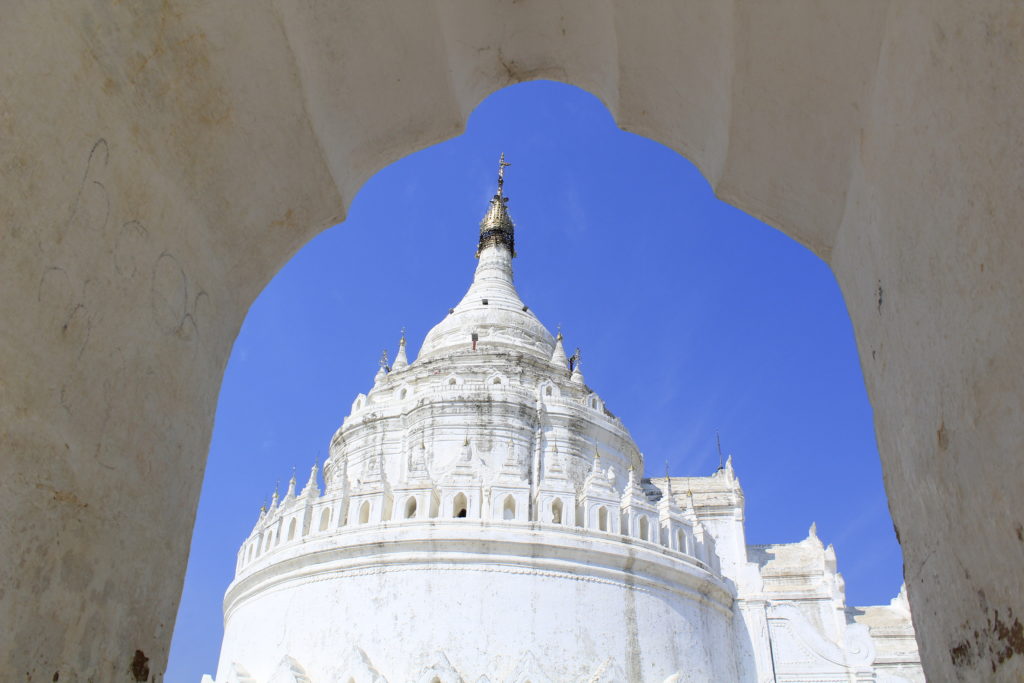
Sagaing: Sagaing is the administrative seat of the Sagaing Region. It is notable for a hill with many pagodas overlooking the Irrawaddy River and there’s is a great view of it as you cross the river. You have to pass through Sagaing on your way to Mingun so a visit to these pagodas is a quick side trip and there are some good views from the top, but it’s not a must see.
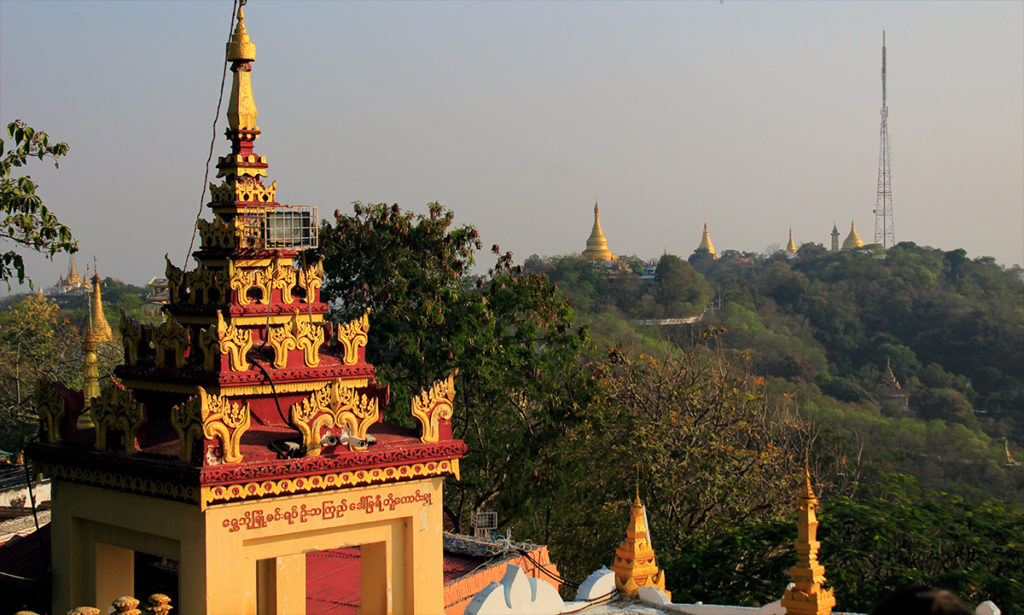
Amarapura: Amarapura is one of the ancient capitals of Burma. It’s now famous for the U Bein bridge, which at one time was the longest teak bridge in the world (it still is one of the longest). Constructed in the 1850s, the bridge is currently straining to support the thousand or so tourists who cross it at sunset to take photos. It’s a testament to the longevity of teak!
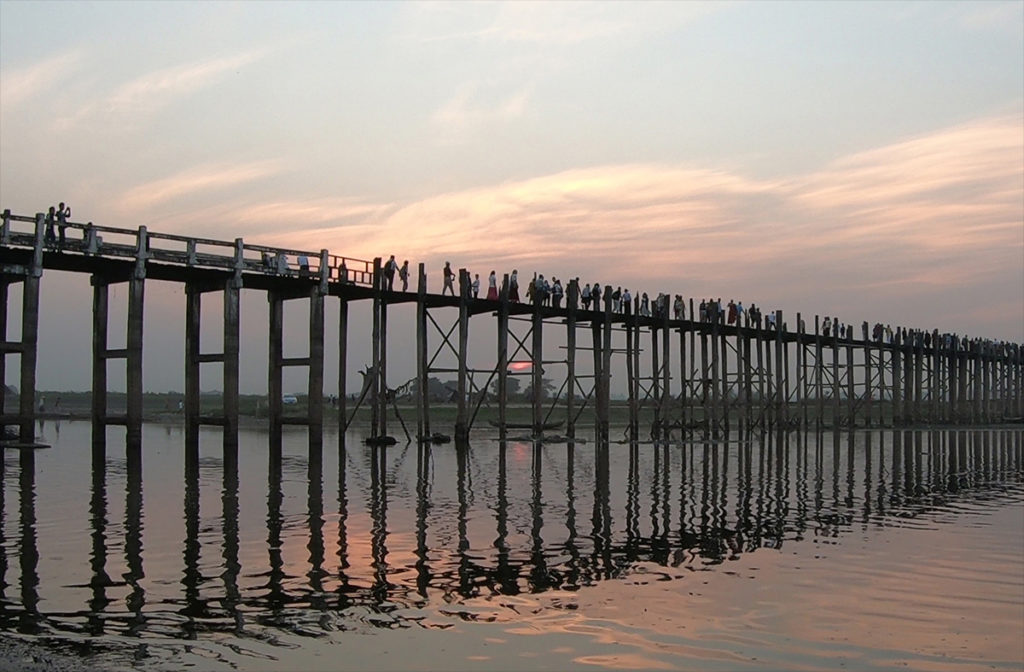
Tips for travelers to Mandalay: There are many travel blogs which debate the value of visiting Mandalay or not. We enjoyed our stay and felt you could see the city and the surrounding area in two action packed days. Make sure you tour Mandalay BEFORE going to Bagan, since it would seem anticlimactic afterward (everything feels anticlimactic after Bagan).
The attractions in Mandalay are interesting but due to the war damage they lack the ancient authenticity that you will find in Bagan. In my opinion the best part of Mandalay was exploring the city and driving the country roads and seeing Myanmar in its purest form. Much of Myanmar is stuck in the 19th or early 20th century. They still use ox drawn wagons or antiquated Chinese trucks for farming and transportation and wear traditional dress that hasn’t changed in millennia. Dad stared out the window in wonder as we bounced by on primitive roads in our modern air conditioned Toyota van.
What to do: If you are there for two days, you have two sunsets. See one from U Bein Bridge and the other from Mandalay Hill. These can be incorporated into two day trips – one exploring Mandalay proper and another the surrounding sites. There are guided trips for each with a cost of between $30-$60 for a personal car and driver. Hiring an English speaking tour guide is $50 per day. We opted to hire the car for our family of five and used google / wikipedia as our tour guide.
Touring Mandalay: The city and its tour is divided into the northern and southern halves. In the northern half make sure you see Shwenandaw Monastery and Kuthodaw Pagoda – do these before going up the hill for sunset. The Royal Palace is interesting but it is a replica. In the southern half see the Mahamuni Pagoda and then spend your time going through the local markets and factories (stone carving, wood carving, jade market, etc.).
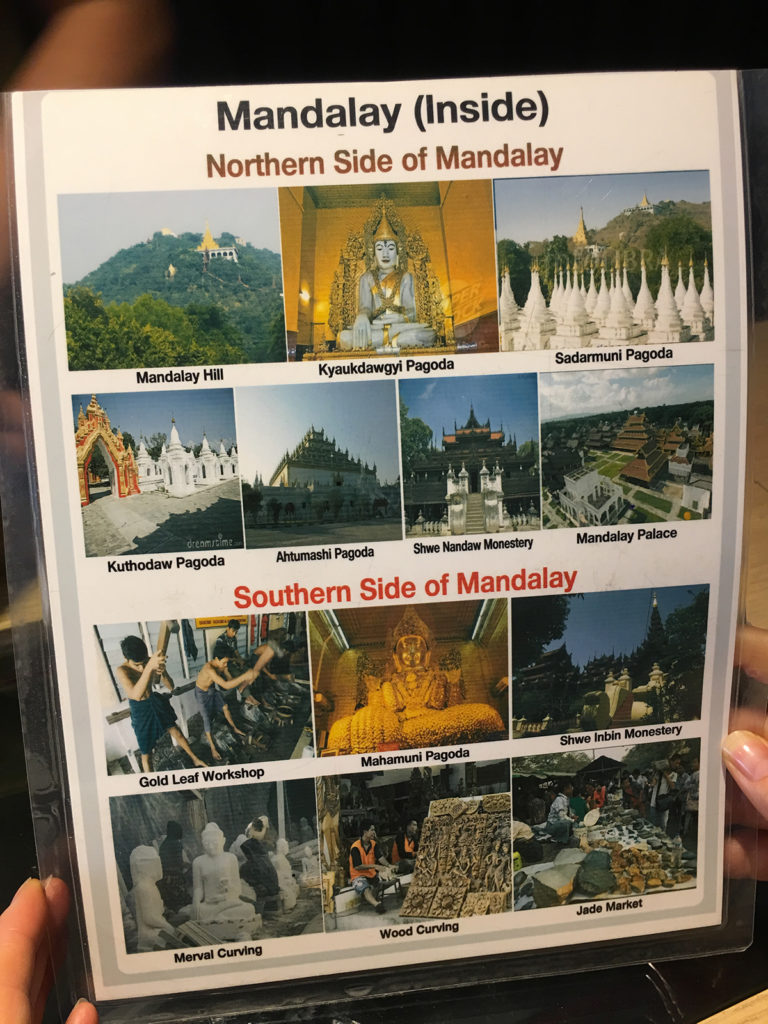
Outside of Mandalay: If you have the time, then we would recommend seeing the area around Mandalay. We enjoyed Mingun because it was less crowded and Sagaing was worth the 30 minute excursion to get some pictures (you drive by it on the way to Mingun). We didn’t have time to explore Ava (Innwa) and concluded our day at the U Being Bridge among the horde of Chinese tourists that was shipped in on tour buses.

Where to stay: There are several newer hotels in “downtown” Mandalay. We stayed at the Link 78 across from the train station and would recommend this hotel. Rooms were around $65 USD per night and it comes with a good breakfast.
What to eat: There is tons of street food as well as local restaurants. Given that Myanmar living conditions felt a step below other places in Southeast Asia we decided to play it safe and ate a established restaurants with online (Google / TripAdvisor) reviews. Given that tourism is just developing in Mandalay there are only a few restaurants listed so when you go there, it’s all western / foreign customers (clearly google controls all of our lives!). We ate at Mingalabar (Burmese food) and Marie Min Restaurant (vegetarian) and would recommend both.
Written by Jason and Ellis Andrews
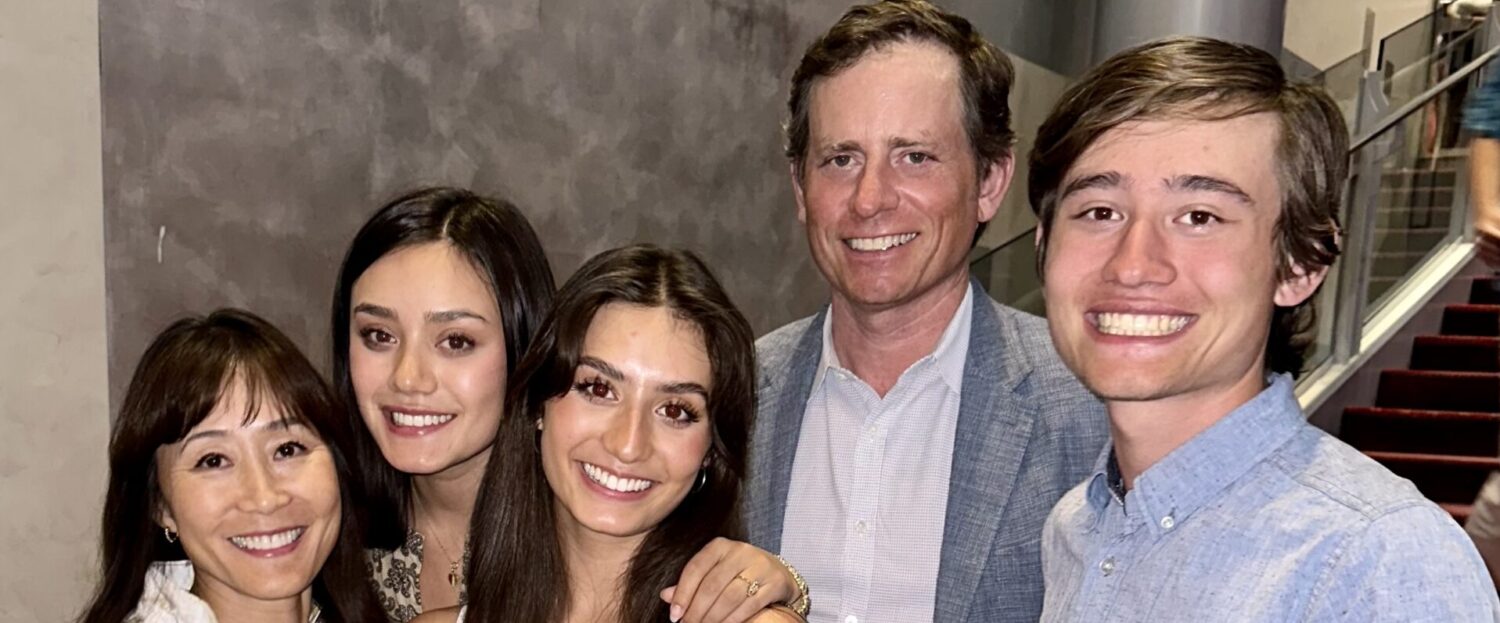

A fun summary of your experience! Thanks!! And you gotta love the poetry: “As our day began, so too did it end, watching the last light of the sun kiss the gilded stupas goodbye.” Wow! 🙂
that would be Ellis… 🙂